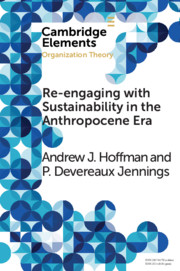Element contents
Re-engaging with Sustainability in the Anthropocene Era
Published online by Cambridge University Press: 23 August 2018
Summary
- Type
- Element
- Information
- Series: Elements in Organization TheoryOnline ISBN: 9781108628068Publisher: Cambridge University PressPrint publication: 30 August 2018
References
- 40
- Cited by

